- Policy
- Posted
Are you being served?
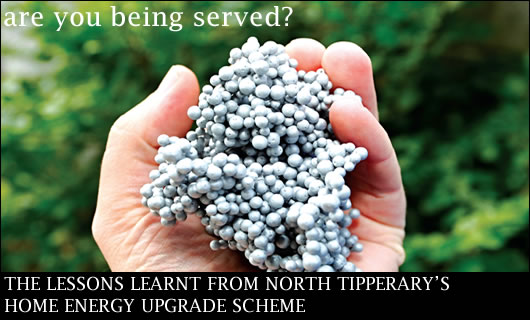
A sustainable energy project in north Tipperary has the potential to create a pioneering green community – buildings are getting energy makeovers, grants are available for renewables and the ecovillage at Cloughjordan is under construction. But getting householders in the area to go green is still proving a hard sell, as Lenny Antonelli reports.
Anne Hall is one happy customer. It's been just a year since the sprightly Tipperary homeowner upgraded her house with cavity wall and attic insulation, a new boiler and heating controls under an EU-funded sustainable energy project. She's certainly noticing the difference.
"In my room it was always cold – now you wake up in the morning and there's no cold air," she says. Hall reckons the savings on her energy bills will pay for the measures in two to three years.
Serve – Sustainable Energy in the Rural Village Environment – is funded by the European Commission, and operates in the northernmost wedge of Tipperary, an area with a population of over 17,000. The scheme grant-aids energy upgrades and renewables in existing buildings, and also supports the pioneering ecovillage in Cloughjordan, which will be profiled in the next issue of Construct Ireland.
Anne Hall upgraded her home under the pilot phase of SEI's Home Energy Saving (HES) scheme, one of Serve's first projects. Originally built of solid stone in the mid forties, the house doubled in size in 1985 with a cavity wall extension.

Fibre glass insulation
Hall was prompted to upgrade by her home's awful thermal performance. "I was very conscious that I was losing all that heat, burning all that oil, using a lot of energy for nothing," she says. She was also bemused by her heating system, which forced her to heat the entire house – and the hot water – or nothing at all.
After reading about the HES pilot scheme, she applied and was approved. The Gilmartin Group pump-filled her wall cavities – already lined with two inches of polystyrene board – with EcoPearl polystyrene bonded bead insulation, which should bring the U-value down to about 0.3 W/m2K. They also installed eight inches of fibreglass insulation in the attic over the existing four inches.
Hall chose to upgrade her boiler too, though she didn't intend to at first – her previous one was just six years old. Her new unit is a 25kW Firebird Heating Solutions oil boiler – there's no gas network in the region – and she's emphatic that installing it was the right choice. She reckons the house consumes a third less oil now, with much better results. "That was actually the best move I made – the boiler," she says. Though she used her immersion for hot water a lot before, it's been off since the upgrade.
She's equally satisfied with her new heating controls system, which has one zone for space heating and one for hot water. She controls the temperature of both through a central thermostat and digital programmer, using thermostatic radiator valves (TRVs) to set conditions in each room. TRVs allow users to set the temperature in a room by controlling the flow of hot water to the radiator. "It gives you the freedom of saying what's on and what's not," she says. "The thermostat alone is so much more efficient and easier, you have the feeling that you're in control of the situation."
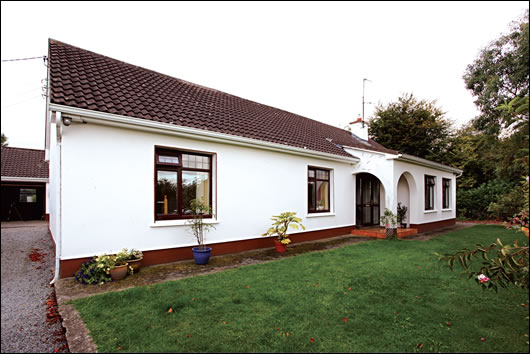
Anne Hall’s home was upgraded under Serve's pilot of SEI’s Home Energy Saving scheme; under the scheme, the Gilmartin Group installed eight inches of fibreglass insulation in her attic and pump-filled her walls with their EcoPearl bonded bead insulation
Hall is so pleased with the upgrade she's spreading the word – she’s convinced a friend to apply, and on the day Construct Ireland visited she was filling out an application for another home in her family. She's more energy aware now too. "I go down to my son's house and the thermostat is at 24oC, and I press it back down, and I know when I go out the door they press it back up again."
Hall's home is exactly the type Serve is targeting – a poorly insulated rural bungalow. The seeds of the scheme were sown in 2003, when representatives of the ecovillage approached the sustainable energy centre at Tipperary Institute, the local higher education institute, about collaborating. The villagers had heard about the European Commission's Concerto programme, which provides financial support to sustainable energy projects, and were looking for the institute's help in applying. Led by Seamus Hoyne, Tipperary Institute submitted a bid in 2004, but failed to win funding. They reapplied in 2005, this time putting more emphasis on energy efficiency and retrofitting, and were successful.
Serve finally kicked off last year. The region was a testing ground for the pilot of the Home Energy Saving scheme, which upgraded 44 homes. A second round of over 50 upgrades – the exact number isn't final – took place this year. These have typically boosted the Building Energy Ratings from an E or F to a C1.
Serve will run for five years – the first three for retrofitting and installation of renewables, the last two for monitoring and analysis of all the buildings. A single HES grant was available in last year's pilot scheme for upgrades, but homeowners in the region can now apply for both HES and Serve grants.
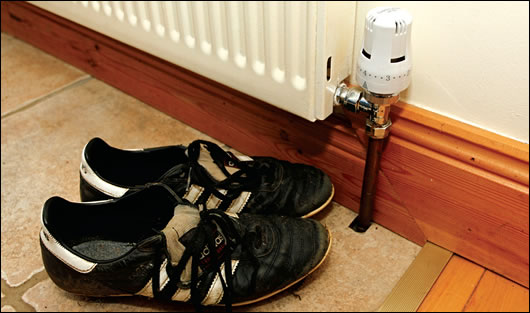
Thermostatic radiator valves were installed in Hall's house, allowing her to set the temperature in each room by controlling the flow of hot water to the radiators
To qualify for Serve upgrades, homeowners must insulate their walls and attic, install heating controls and undertake two further measures. Options include new windows (which must meet an overall U-value of 0.2 W/m2K), high efficiency boilers and cylinders, motion and daylight sensors for lighting, advanced heating controls, and natural insulation. Serve covers 30 per cent of the cost of the various technologies. The goal is for homeowners to undertake the basic measures supported under HES and then go further. New boilers and cylinders have been the most popular extra measures so far.
Grant-aiding heat recovery ventilation was considered but ultimately ruled out – the poor air-tightness of most Irish homes being one reason, public education being another. "We need to get people to understand insulation first," says Paul Kenny, consultant with Serve technical partners Tipperary Energy Agency. Kenny reckons combined Serve and HES grants can meet 50 per cent of upgrade costs for a bungalow, 70 per cent for a more modern semi-d.
Serve will start promoting a grant for household renewable heating shortly. The grants will only be available to houses with a BER of C1 or better – the emphasis is on making homes energy efficient before renewables are installed. Serve will supplement SEI's Greener Homes grants for solar thermal with e100 for flat solar panels and e150 for evacuated tubes, while offering a separate e3,500 for biomass boilers and e650 for log stoves.
Stoves haven't been supported by SEI to date, principally because it's impossible to guarantee users will burn timber rather than high carbon fuels like peat or coal. To avoid this, stoves installed under Serve must be fitted without a grate – an important element for burning peat or coal properly.
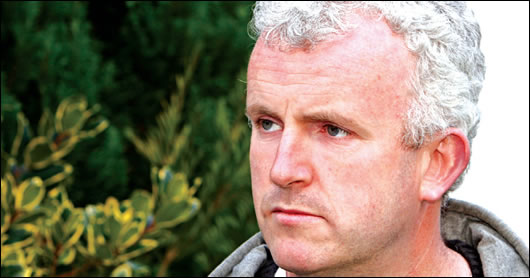
BER assessor Brendan Power has worked extensively on houses under Serve, including Anne Hall's home
Serve is aiming to target 500 existing building in total, and grants are available for upgrades and renewables in non-residential buildings too. A childcare facility in Cloughjordan was recently upgraded with new heating controls, insulation and lighting. A fire station, motor tax office and large B&B are set to follow – the aim is to reduce energy consumption by 40 per cent in all of them.
Once three years of upgrading and installation are done, the next two years will be spent monitoring and analysing data collected from all participating buildings. The North West Croatia Energy Agency, one of Serve's partner organisations, will carry out a socio-economic analysis of Serve – calculating the number of jobs created, how much money was kept in the region, and potential business opportunities in future.
One installer whose business is benefiting under Serve is Matthew Collison of FPI Solar. Collison started out in solar thermal, but added insulation and energy upgrades to his repertoire to offer a one- stop-shop service – and because he knew energy efficiency should come before renewables. For Collison, being able to offer independent advice is crucial. "I'm not ideologically driven by any technology," he says. While he'll "go where the work is", half his jobs are now local – a clear indication that energy upgrade schemes can provide vital support to local tradesmen.
For tradespeople and householders, Serve is a pioneering programme. It has the potential to create jobs, make buildings greener, reduce energy bills, raise awareness and yield vital information on energy consumption, and provides vitals lessons on how to manage and promote energy upgrade schemes. But that doesn't mean it's an easy sell to homeowners.
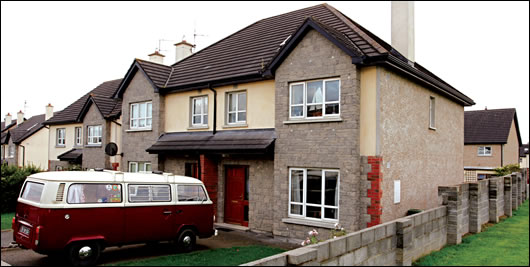
Energy consultant Paul Kenny upgraded his semi-detached home in August and already is noticing the difference, using rooms now that were too cold before
"We can't convince people in post 1991 houses that they need to upgrade," says Paul Kenny. He reckons many people think that if they can heat their home adequately, that means its energy efficient. "People don't have the knowledge of what an energy efficient house is," he says. This isn't for want of trying though. To promote Serve, public information evenings have been organised through the region, ads have appeared on radio and local papers, and contractors are producing their own literature and knocking on doors.
Applicants to Serve are mostly over 40, and many are over 60, living in houses built between 1940 and 1990. Kenny encouraged all his neighbours to apply, pointing out that a group job – he lives in an estate in Nenagh – could yield big discounts. Most weren't interested, but that didn't stop him. Kenny insulated his walls and attic, installed a new boiler and heating controls, added light sensors, and is planning to get a log stove too. This will boost the energy consumption of his semi-detached home, which is less than ten years old, from 190 kWh/m2/yr down to 106 kWh/m2/yr, and push the BER from a C2 to a B2.
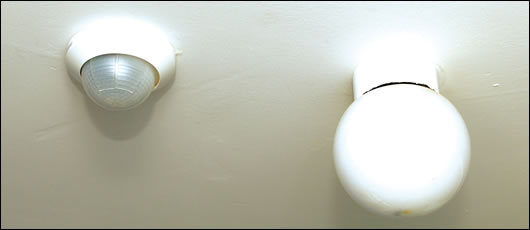
Motion and daylight sensors were installed beside light fixtures throughout the house
As with Anne Hall, the Gilmartin Group pump-filled his four inch wall cavity – already partially insulated with a two inch board. This should boost the U-value from about 0.45 W/m2K to 0.29 W/m2K, but as Kenny says, it's a "real" 0.29 – the old U-value was only notional because the thermal performance of partial-fill board drops if, as is common, gaps form between the board and wall. Pump-filling will not only ensure a complete fill, it will press the existing board against the inner wall. "I think every house should have this [pump filling] done urgently," he says.
Kenny insulated his attic with fibreglass from the Gilmartin Group. He installed about 450mm above an existing 130mm of fibreglass in the space that runs around his converted attic, giving an effective U-value of 0.09 W/m2K, and added 330mm in the roof above to give a U-value of 0.13 W/m2K.

Paul Kenny of Tipperary Energy Agency reckons combined Serve and HES grants can meet about 70 per cent of the upgrade costs for a modern semi-d
He also installed a new 15-20kW 95 per cent efficient Grant Vortex oil combi boiler. His heating is divided into three zones: upstairs, downstairs and hot water. It was hard to find a boiler to suit his needs – he says boiler over-sizing is common. "[Most plumbers] don't relate the fact that I've just insulated my walls and attic to the fact that I need a smaller boiler," he says.
Though he only upgraded in August, he already sees the difference. "Already you can notice the retention of heat. In the morning without the heating on it's a degree lower than the day before, whereas before it would have been two or three." He's also using rooms now that were too cold in winter before. He installed motion and daylight light sensors throughout too. Each sensor sits beside a light fixture and turns it on or off as needed.
Kenny reckons one of the key lessons of Serve is the importance of ensuring tradesmen working under the scheme are properly trained. Some contractors working under Serve failed to meet various requirements. In two instances dry-lining jobs didn't bring the walls anywhere close to the target U-value, and in other cases no central heating controls were installed, just TRVs. The reality is, unfortunately, that some contractors just don't know about U-values and heating controls.
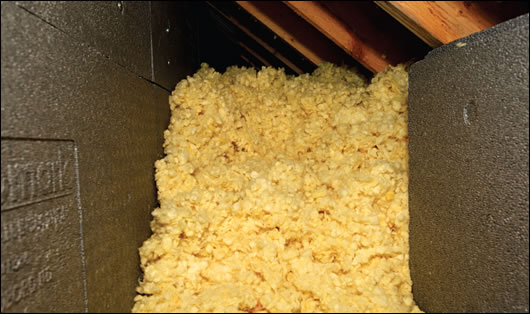
As part of his upgrade an extra 450mm of fibreglass insulation from the Gilmartin Group was installed in his attic
Kenny says many plumbers don't understand the difference between a house that can be heated and one that can be heated efficiently – their belief is that if hot water is coming out the tap and the house is warm, the job is done.
Because Kenny and Seamus Hoyne are on the ground running Serve and keeping up with projects, they can catch dodgy jobs. But what about the thousands of home energy upgrades that SEI is funding? If bad jobs can happen in a tightly managed project like Serve, what must the situation be nationwide?
One BER assessor told Kenny that clients who carried out successful upgrades did plenty of their own research. "There simply isn't the trust out there [in tradespeople]," Kenny says. The solution, he believes, is training – forcing contractors into training courses if they want to work under upgrade schemes, as SEI did with the Greener Homes Scheme.
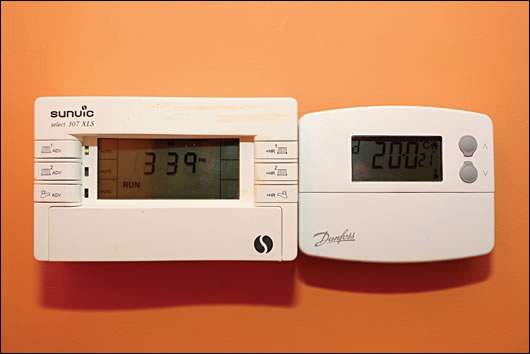
Also included in Kenny’s upgrade was a Grant Vortex oil combi boiler (below) and heating controls to ensure that the house is heated efficiently (above)
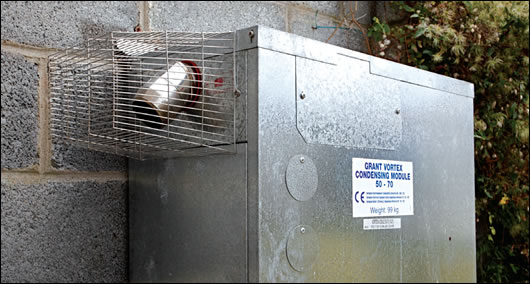
Training is one element of Serve, but it's not mandatory. Courses to date have focused on topics such as heating controls and renewable energy feasibility studies. Introductory courses to sustainable building and retrofit will begin after Christmas, targeting tradespeople with little or no experience of green building. Serve is also supporting students to complete an advanced certificate in renewable energy at Tipperary Institute.
Serve might be turning north Tipperary into a sustainable energy hotspot, but its real legacy could be the lessons and data it leaves for future, bigger schemes. Seamus Hoyne says grant schemes like Serve, which ultimately require building owners to spend money, can only go so far in upgrading our building stock. "People are finding it difficult to finance the measures. For it to be sustainable going forward there needs to be another mechanism," he says.
Construct Ireland is currently campaigning for a national home energy scheme called Pay As You Save, or Pays. This nascent campaign has already had a significant impact, with Constuct Ireland’s proposal to the Green Party leading to a commitment to enable energy customers to “save as they pay” with energy efficiency measures financed through utility bills. This model has the potential to stimulate the upgrade of a vast number of buildings, but will only work if detailed attention is paid to early initiatives like Serve and the lessons they can teach about maintaining high standards and convincing homeowners that – as Anne Hall found out – an energy upgrade ultimately means a more comfortable home, lower energy bills, and less carbon in the atmosphere.
- Articles
- policy
- Are you being served
- Tipperary
- cloughjordan
- Serve
- Sustainable Energy in the Rural Village Environment
- home energy saving scheme
- Pays
- pay as you save
Related items
-
Ireland joins whole life carbon data initiative
-
WorldGBC launches green building policy principles for governments
-
 Cuckoos & magpies: state house-buying hits record
Cuckoos & magpies: state house-buying hits record -
 Blind & shutter group calls for Part B changes
Blind & shutter group calls for Part B changes -
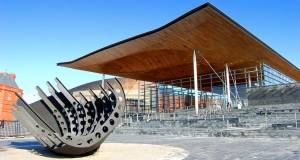 Wales votes to cut emissions 80%
Wales votes to cut emissions 80% -
 Filling the retrofit policy void
Filling the retrofit policy void -
 Water, water, everywhere, nor any drop to drink
Water, water, everywhere, nor any drop to drink -
 Heat pump grants - what you need to know
Heat pump grants - what you need to know -
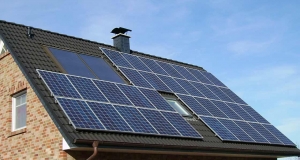 Policy for zero, or zero policy?
Policy for zero, or zero policy? -
 Why construction contracts must change in light of Grenfell
Why construction contracts must change in light of Grenfell -
 Government ‘Help to hoard' scheme - why we’re not building homes
Government ‘Help to hoard' scheme - why we’re not building homes -
 Grenfell Tower - How did it happen?
Grenfell Tower - How did it happen?

